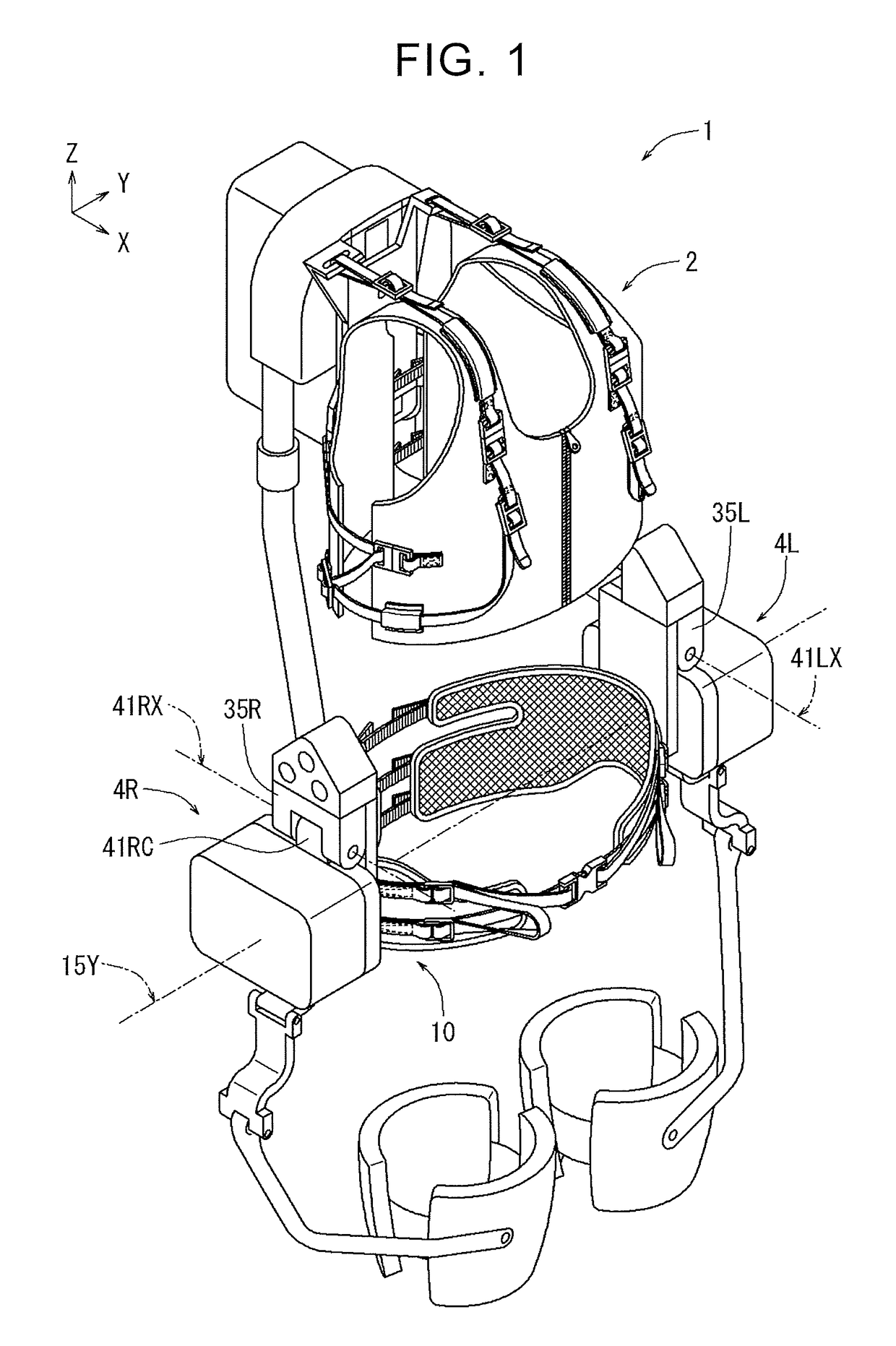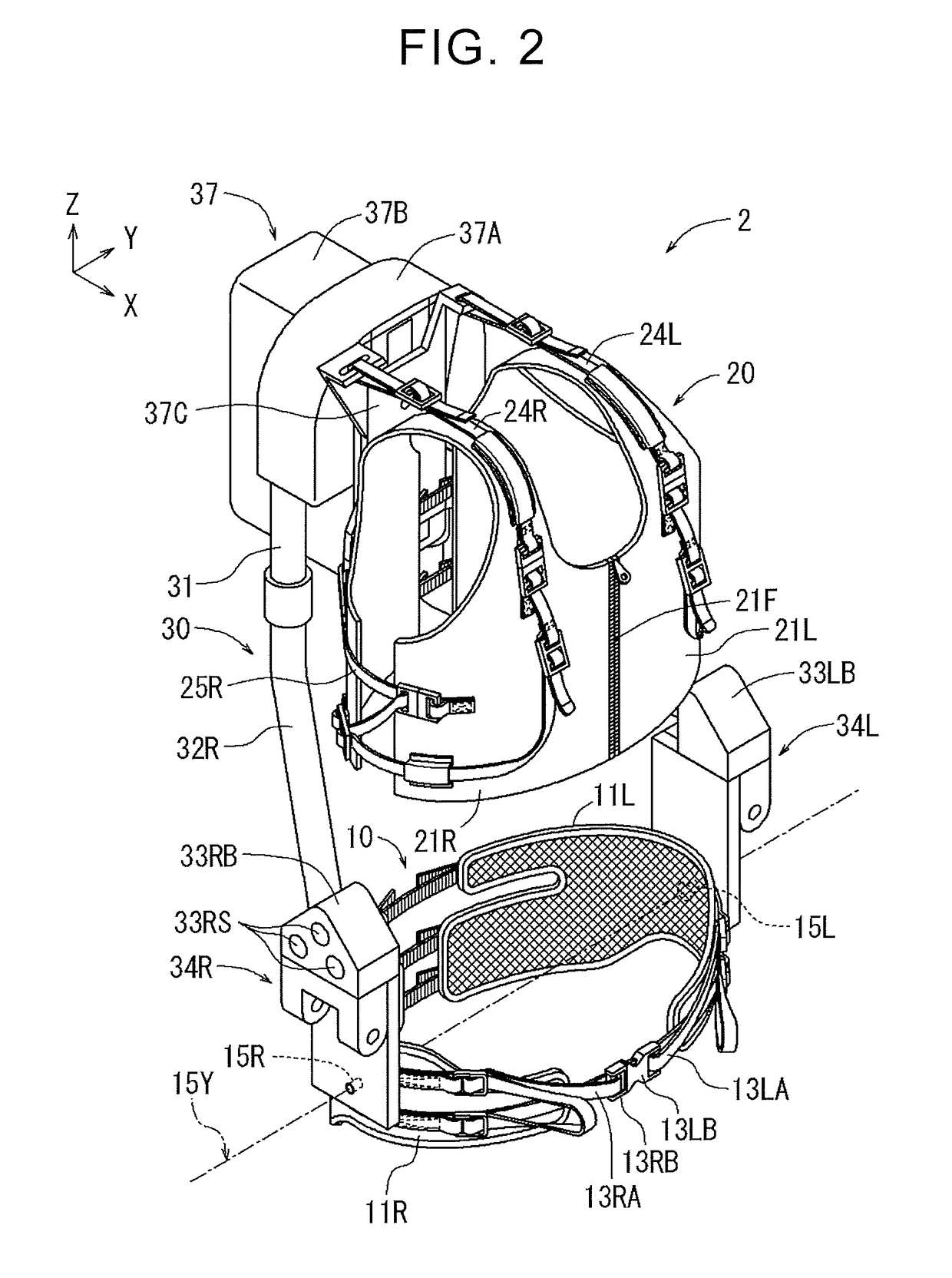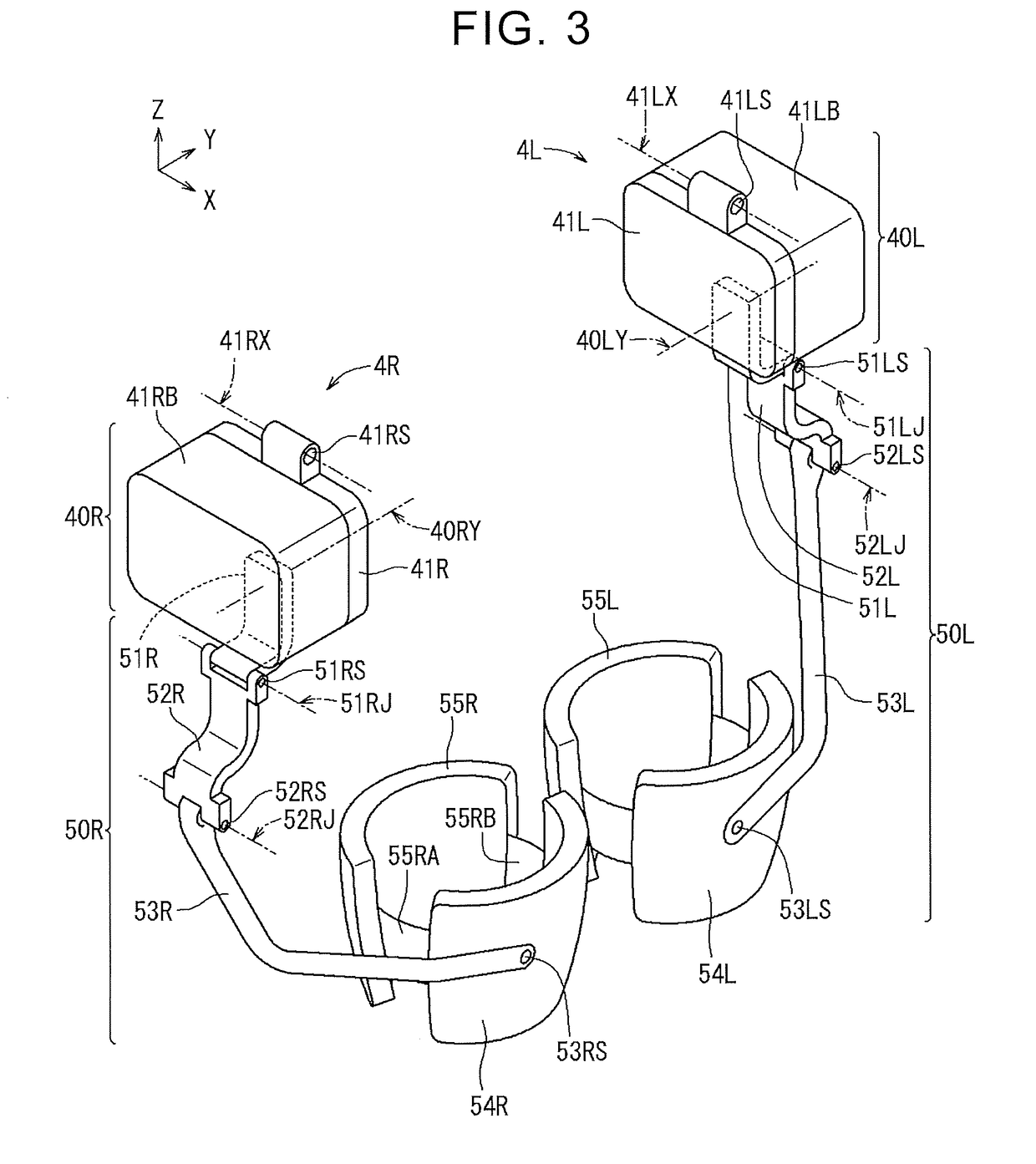Assist device
a technology of a support device and a splint, which is applied in the field of support devices, can solve the problems of difficult to detect the pivot angle with a high resolution, difficult to assist the user in performing the lifting of objects, and the user cannot stand firm, so as to achieve the effect of efficiently continuing the motion
- Summary
- Abstract
- Description
- Claims
- Application Information
AI Technical Summary
Benefits of technology
Problems solved by technology
Method used
Image
Examples
first embodiment
[0082]Hereinbelow, the overall structure of an assist device 1 will be described with reference to FIGS. 1 to 21. The assist device 1 is, for example, a device that assists pivoting of the thighs relative to the waist when a user lifts up an object (for example, a parcel or baggage) or when the user walks. In the drawings, X-, Y-, and Z-axes are perpendicular to each other, and when viewed from the user wearing the assist device, the X-axis direction corresponds to a forward direction, the Y-axis direction to a leftward direction, and the Z-axis direction to an upward direction.
[0083]FIG. 1 illustrates the overall external appearance of the assist device 1 of the first embodiment. The assist device 1 includes a body wearing unit 2 (see FIG. 2), a right actuator unit 4R (see FIG. 3), and a left actuator unit 4L (see FIG. 3). The body wearing unit 2 is configured to be worn on the body including regions around assist target body parts (the thighs in an example of the present embodime...
second embodiment
[0200]Further, as illustrated in FIGS. 35, 39, a connecting portion 241RS of the right actuator unit 204R is fixed to the lower end of a right sub-frame 232R. Accordingly, in the second embodiment, the right actuator unit 204R does not pivot in the right-left direction relative to the right sub-frame 232R, and the right actuator unit 204R does not pivot in the up-down direction relative to the right sub-frame 232R. This makes it possible to prevent a decrease in transmission efficiency due to unnecessary pivoting of the actuator unit in work (movement) in a state where the assist torque is large or a rapid change of the assist torque is required. Further, pivoting of the upper part of the right actuator unit 204R in the up-down direction is also prohibited in the state where the assist torque is large or a change of the assist torque is fast. This makes it possible to further prevent a decrease in transmission efficiency. That is, when the assist torque is large or a change of the a...
PUM
 Login to View More
Login to View More Abstract
Description
Claims
Application Information
 Login to View More
Login to View More - R&D
- Intellectual Property
- Life Sciences
- Materials
- Tech Scout
- Unparalleled Data Quality
- Higher Quality Content
- 60% Fewer Hallucinations
Browse by: Latest US Patents, China's latest patents, Technical Efficacy Thesaurus, Application Domain, Technology Topic, Popular Technical Reports.
© 2025 PatSnap. All rights reserved.Legal|Privacy policy|Modern Slavery Act Transparency Statement|Sitemap|About US| Contact US: help@patsnap.com



